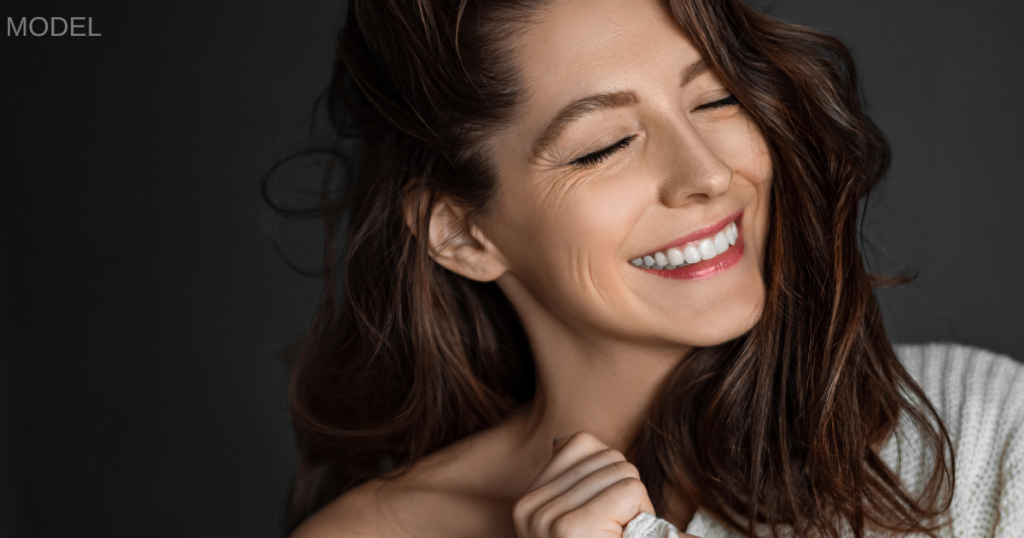Aging and the elements take their toll on your complexion. And the effects of lifestyle habits such as smoking and drinking alcohol accumulate on your skin over time, stealing its suppleness and luster. If you’re looking for improvements that go deeper than topical skincare products, laser skin resurfacing can erase minor imperfections and restore a healthier, more youthful look.
Since advancements in technology continually make new treatments available, you may be overwhelmed by your options. There’s no one-size-fits-all solution, and the best laser for skin resurfacing will be unique to your needs and goals.
What Is Laser Skin Resurfacing?
Laser skin resurfacing is a versatile treatment that removes the top layers of damaged skin and stimulates new collagen formation. It’s safe for most skin types and colors and useful for many skin concerns, including:
- Sun damage
- Uneven skin tone or texture
- Enlarged pores
- Acne marks
- Wrinkles
- Scars
- Birthmarks
What Types of Lasers Are Used in Treatment?
Ablative laser treatments remove the outer skin layer (epidermis), heat the layer beneath (dermis), and tend to be more invasive. Non-ablative lasers are effective for many skin conditions but are less aggressive and require less downtime. Multiple non-ablative laser treatments may be needed to achieve your desired results.
Both ablative and non-ablative lasers stimulate the growth of collagen—a protein that enhances skin firmness and texture.
Laser types commonly used in laser skin surfacing include the following:
- CO2 (carbon dioxide) lasers use targeted beams of light to remove the damaged outer layer of skin—reducing acne scars and wrinkles and improving texture and tone. The laser energy boosts collagen production and stimulates the growth of new skin cells.
- Erbium (Er:YAG) lasers facilitate collagen remodeling and can treat a wide range of surface-level to moderately deep skin conditions, including pigment irregularities, lines, and wrinkles. The depth of the treatment is customized according to your specific skin conditions and desired outcomes.
- Fractional lasers are another type of laser developed to reduce recovery time and the risk of side effects. They treat only some of the microscopic columns of skin in a treatment area, leaving some of the skin untouched to accelerate healing. Fractional lasers can be Co2 or erbium lasers. Some fractional lasers, like the HALO® laser, combine two wavelengths into one treatment to target pigmentation issues and collagen production at the same time. Results include a reduction in wrinkles and signs of sun damage, improvement in brown spots and acne scars, and smaller pores.
What’s the Treatment Process?
Laser skin resurfacing is performed on an outpatient basis in an office setting and usually takes between 1 to 2 hours, depending on the area to be treated. A topical anesthetic cream or gel is typically applied to the skin before treatment to numb the area. Local anesthesia may be used in some cases.
Most patients tolerate the treatment well and experience only minor discomfort. During laser skin resurfacing treatment, you may experience a feeling of warmth, tingling, or a stinging sensation. Some people say it feels like a rubber band snapping against your skin.
What Is Recovery Like?
Generally speaking, the larger the treatment area and the deeper the laser penetrated the skin, the longer the recovery time. Healing typically takes between 3 and 10 days. Most of our patients are back to work in 5 days.
Recovery from ablative laser treatment can take up to 2 or 3 weeks, so you may want to plan some social downtime. Your skin may be red, and scabs may form following treatment. Minor peeling may occur.
As your skin heals, you’ll notice an improvement in the quality and appearance of your skin. These effects can last for years, especially if you protect and nourish your skin with advanced sunscreen and skincare products.
What Are the Risks of Laser Skin Resurfacing?
When performed by a qualified practitioner, laser skin resurfacing is typically safe and effective. However, as with any cosmetic procedure, side effects can occur.
Risks associated with laser skin resurfacing include:
- Redness
- Swelling
- Itching
- Pain
- Infection
- Changes in skin color (hyperpigmentation or hypopigmentation)
- Scarring
You can lower your risks by following your provider’s pre-care and aftercare instructions. Patients with chronic fever blisters or cold sores should avoid laser skin resurfacing since treatment can trigger outbreaks.
What Is the Best Laser for My Skin Resurfacing Treatment?
Look for a laser resurfacing treatment provider with the experience, training, and qualifications to assess your skin, advise you on how to prepare for your treatment, and recommend a customized treatment plan for your needs.
CC Skin Clinic at Crantford Costa Plastic Surgery offers several skin resurfacing treatment options (laser and non-laser), including HALO hybrid fractional laser, MOXI®, Contour TRL, Morpheus8, and more. Many patients choose to complement laser skin resurfacing with other nonsurgical antiaging treatments, such as BOTOX® Cosmetic or dermal fillers, such as JUVÉDERM® & Restylane®.
If you’re interested in rejuvenating your skin and getting your glow back with laser skin resurfacing, call our office today at (843) 722-5904 or request a consultation using our online form.


Leave a Reply